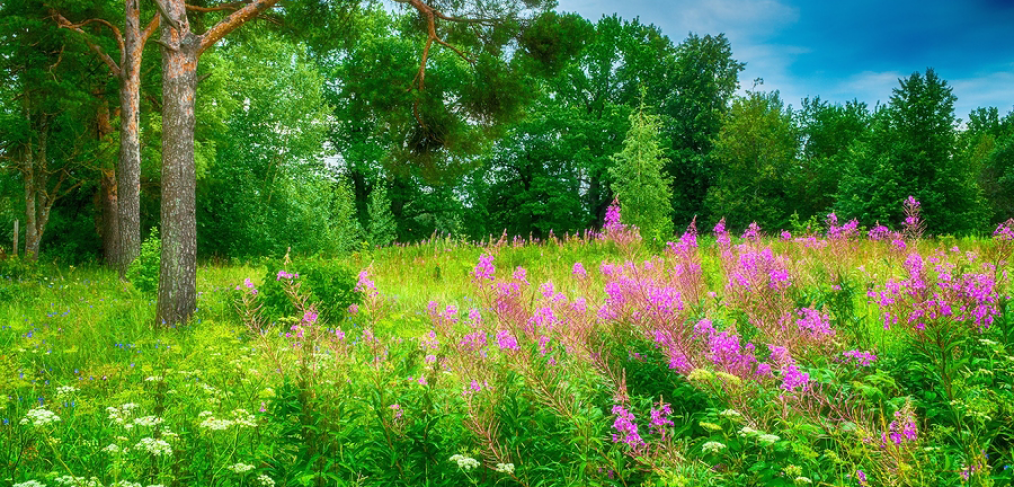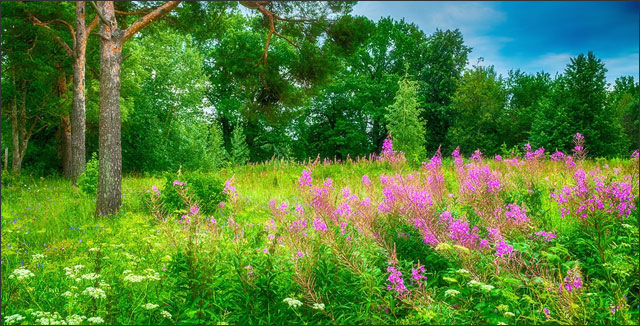
An Ecological Garden Revolution – The New Gardening Phenomenon

There’s nothing more tragic to a lover of plants than the sight of several sad little plants languishing by themselves in a newly “landscaped” front yard or park. It may be on a small island amidst a sea of concrete, or even in a sea of grass.
I often see the beginning gardens of amateur gardener and wonder what’s going wrong with it.
Why doesn’t it please the eye? Why does it look stunted and sad?
After all, the gardener was most likely following the instructions that are given by the nursery about how best to cultivate the plant. Most instructions give placement requirements: “plant no closer than 2 inches from another plant.”
The Missing Ingredient
The missing ingredient, I found out from reading Understanding What Makes Plants Happy in the New York Times, is not necessarily a fabulous eye for design.
The subject of the article is Thomas Rainer, a registered landscape architect, teacher, and author. It is also about an in-depth awareness of what plants like and how they grow best.
To give you an idea of Rainer’s success, he has designed landscapes for the US Capitol grounds, Martin Luther King Jr. Memorial, the New York Botanical Garden, and many private gardens all over the country.
Rainer’s book, Planting in a Post-Wild World: Designing Plant Communities for Resilient Landscapes is co-authored with Claudia West. It is all about this new gardening phenomenon. It’s one that takes both traditional horticultural forms and applies them to the natural state of plants to produce gardens that are lovely, eco-friendly, and low-maintenance.
Barbara Mahany’s article in the Chicago Tribune describes it as “designed plantings that function like naturally occurring plant communities.” In addition, she states that the book is “an optimistic call to action” and “a manifesto dedicated to the idea of a new nature, a hybrid of both the wild and the cultivated,” one that points toward a new future in planting design.
Does that sound too good to be true? Read on!
The Ecological Garden and Green Mulch
The first concept that caught my attention in this article was the concept of “green mulch.” That is, instead of using bark mulch, chemicals, and heavy weeding to control the fight for bare soil in your garden space, start to think of bare soil as the commodity it is.
Don’t leave your soil bare or covered in mulch in between plantings of “star” plants you want to highlight. Instead, plant living groundcover in the form of, well, plants.
Why have so many of us gardeners never thought of this?
I think some of the answers are in the title of Rainer and West’s book, It’s a Post-wild World. With the advent of farming on the scale we have today, little is left of the prairie lands as they once were.
Gardeners growing living plants for pleasure only don’t have as much to draw from.
Learn By Watching
However, according to Rainer and West, you can learn a lot by just watching your plants. They suggest looking at them from a “chipmunk’s eye view.”
If you have a plant that grows low to the ground and wants to spread, it will want to live fundamentally differently from a tall, upright plant without much lower foliage.
Then think about how the two (or three, or four) can coexist happily in the same space. In other words – even if you don’t know anything about the root structure or history of a plant you are interested in, you can deduce a lot from looking at its shape.
“Upright plants with low or minimal basal foliage like Joe Pye weed (Eutrochium) or spiky upright plants like beargrass (Nolina bigelovii) have adapted to growing through other plants. Horizontally spreading rhizomatous plants like Pennsylvania sedge (Carex pensylvanica) or beach strawberry (Fragaria chiloensis) have adapted to grow underneath others.”
Plants Are Sociable
I think this was the second most interesting moments in my reading of this article. Of course, I theoretically understand that plants are sociable.
However, to put it into practice in the way Rainer has is genius. He describes how we often isolate plants “setting them ‘as individual objects in a sea of mulch.'”
Pay Attention to How They Grow in the Wild
But if you want your ecological garden to really thrive, pay attention to how they grow in the wild. They are not individuals going it alone, they are interrelated. They are meant to thrive in a diverse ecology or community.
We have to stop thinking of our gardens the way we think of our potted plants or greenhouses. Rather, we need to think of them as a whole different entity.
Rainer describes it as planting in communities. You are managing a community, not maintaining isolated plantings. Within that framework, there is so much design possibility and room for flexibility without all the backbreaking weeding.
The following websites are all great resources to find out how different plants grow in the wild and what it grows with.
Another Great Tool
Another of the great tools Rainer mentions for helping gardeners to figure out their plants’ tendencies comes from a German book by Richard Hansen and Friedrich Stahl called Perennials And Their Garden Habitats.
Hansen and Stahl developed – or re-discovered – the idea of plant sociability for a gardening context. In this work, they started to rank a plant’s preferences to spread on a scale of 1 to 5.
Thus, a low-sociability plant is found by itself in the wild and a high-sociability plant spreads into large colonies in the wild.
To give plants the correct level of biodiversity, you arrange them according to their sociability rating.
“Panicum virgatum, for example, is almost always found by itself in a meadow. A high-sociability plant is one that spreads into large colonies (Epimedium or Tiarella cordifolia are Level 4 plants; Carex pensylvanica and Packera aurea are Level 5). You arrange plants according to their sociability level: Plants of lower levels (1 and 2) are set individually or in small clusters. Plants of higher levels (3 to 5) are set in groups of 10 to 20-plus, arranged loosely around the others…It’s why a mass of 50 echinacea (Level 2) tends to flop. They’re just not meant to cover ground. But if you scatter a handful of echinacea in a mass of prairie dropseed or sideoats grama, it will look great.”
Conclusion
I don’t know about you, but after I read this, my mind was bursting with ideas and plans. I am contemplating how to modify my garden into an ecological garden in the spring to include perennials that work well together. Lastly, I hope this inspires you to try some more diverse and eco-friendly plantings of your own!



